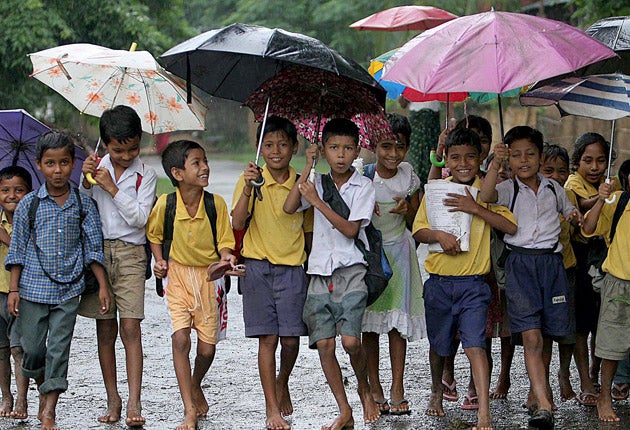Whatever the weather: Why the seasons always blow hot and cold in Delhi

Your support helps us to tell the story
From reproductive rights to climate change to Big Tech, The Independent is on the ground when the story is developing. Whether it's investigating the financials of Elon Musk's pro-Trump PAC or producing our latest documentary, 'The A Word', which shines a light on the American women fighting for reproductive rights, we know how important it is to parse out the facts from the messaging.
At such a critical moment in US history, we need reporters on the ground. Your donation allows us to keep sending journalists to speak to both sides of the story.
The Independent is trusted by Americans across the entire political spectrum. And unlike many other quality news outlets, we choose not to lock Americans out of our reporting and analysis with paywalls. We believe quality journalism should be available to everyone, paid for by those who can afford it.
Your support makes all the difference.If there's one aspect of the Indian weather that most people have heard about, it's the monsoon rains that drench parts of southern Asia between June and September.
Non-meteorologists tend to think of the monsoon as meaning only heavy rainfall, but the word monsoon actually means "season" and describes the changes in wind direction during a seasonal cycle. Monsoons are characterised by a pronounced rainy season, but they include a dry season as well. In Delhi, the monsoon rainy season lasts for about two months in July and August and brings relief from the intense heat that builds prior to its onset.
Delhi is situated on the banks of River Yamuna in the northern part of India; the Himalayas are to the north. It is a land-locked city and its distance from the sea gives it a continental climate in what is more typically a humid subtropical region. This continental influence leads to significant differences of temperature and rainfall in winter and summer.
Delhi does experience a short and relatively cool winter season. I say relatively cool, as maximum temperatures remain around 21C during winter, compared to the sweltering heat of the summer when temperatures peak in the mid-30s.
Occasionally, heat waves can result in highs close to 45C on some summer days. Night temperatures fall away quite markedly during the winter. Delhi's proximity to the Himalayas results in cold waves that can dip minimum temperatures close to freezing. The winters are also hampered by mist and fog during the morning, causing major traffic disruption.
Delhi experiences a long, very hot summer which begins in early March when the winds change direction from the northwest to become southwesterly. These winds bring hot air from the Rajasthan desert region. A characteristic of the Delhi summer is the loo, a wind that deposits sand carried from the desert. Between March and May the hot, prickling heat continues to intensify until the monsoon rainfall arrives at the end of June, bringing some respite from the heat, but increasing humidity at the same time.
The average annual rainfall is 714mm, similar to that for Manchester in the UK. Unlike Manchester, though, most of rain in Delhi falls during the monsoon. The average date of the advent of monsoon rain in Delhi is 29 June, and the onset can often be predicted down to the precise day. Often, but not always: in 2002 the monsoon rains failed and led to a drought across much of India.
Dr Liz Bentley is founder of the Weather Club, formed by the Royal Meteorological Society to promote an appreciation and under-standing of the weather. Visit theweatherclub.org.uk for more information
Join our commenting forum
Join thought-provoking conversations, follow other Independent readers and see their replies
Comments